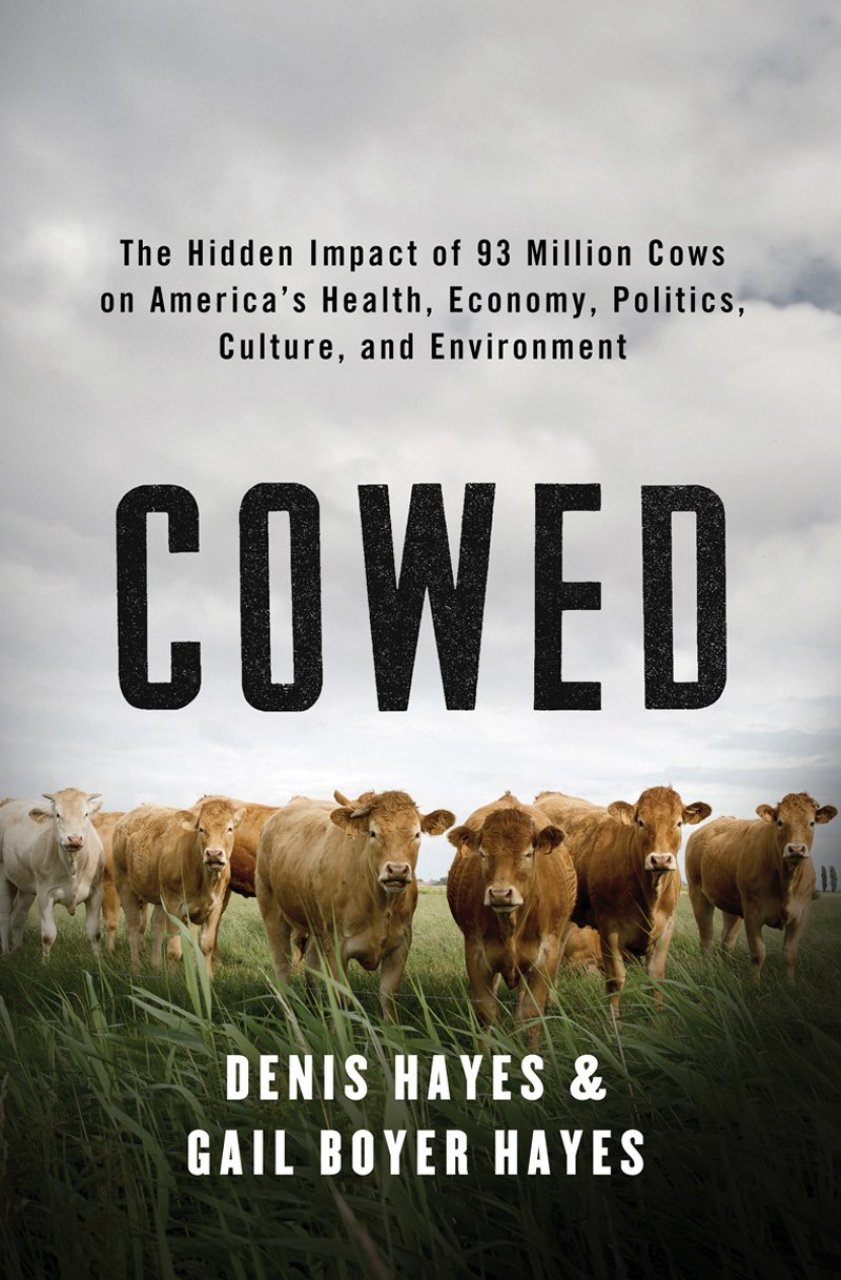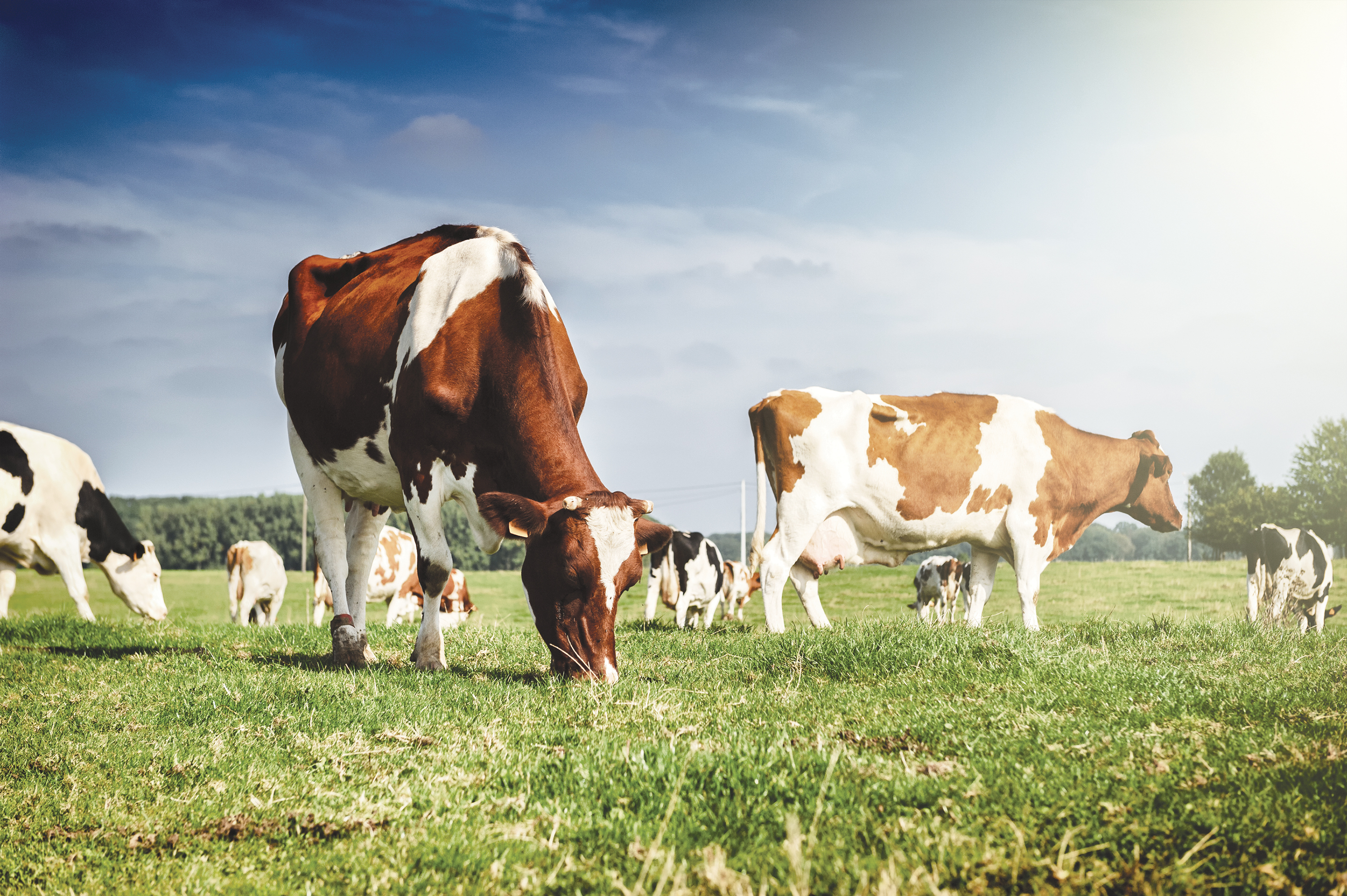
Cowed: The Hidden Impact of 93 Million Cows on America’s Health, Economy, Politics, Culture, and Environment
Denis Hayes and Gail Boyer Hayes
W. W. Norton & Company
“Cows,” write the environmental activists Denis Hayes and Gail Boyer Hayes, “are partly responsible for Americans’ increasingly rotund bodies and poor health.” They were not responsible for my own. Years ago, when bread and pasta were touted as part of a healthy low-fat diet, I quickly gained 30 pounds. Then I gave up the carbs, and the weight disappeared. Beef had nothing to do with it.
The connection between cows, or any other single factor, and poor health or environmental problems is usually not simple or direct. But this book presents a strong, measured case that America’s cattle industry has had serious negative effects, and that we should cut our meat and dairy consumption in half and raise fewer cattle with better care.
Let’s leave aside the health effects of a beefy diet. The authors blame cows for excess greenhouse gases and low levels of biodiversity, and it’s true that raising cattle produces carbon dioxide, methane, and nitrous oxide. Water to grow corn and grain for cows is being extracted from underground aquifers and not being replenished. More land is required to raise cattle than to raise chickens or pigs. Even compared to other meats, beef comes out looking bad: Grain-finished beef produces five times more global-warming impact per calorie than pork or chicken.

What can we do? Switching from grazing to cultivating crops could help, but only to a degree. The authors suggest that some farmland used to grow corn for livestock feed and ethanol be used for more diverse food crops. It matters what crops we choose. In the last five years, I have seen large amounts of Uruguayan pasture converted to soy production or, for biofuel, eucalyptus. Converting pastures to monocultures of soy or biofuels will drastically reduce biodiversity. And in the U.S., a large percentage of Western land is arid and not suitable for crops, anyway. The same is true of half of Australia. You can raise food on arid land by grazing animals on it, and as the authors of Cowed recognize, grazing land can be better managed. We could also, they suggest, re-purpose suburban lawns for growing food, and grow a greater density of diverse crops. I’ve seen the first strategy used well in Japan—where they grow crops on highway medians—and the second in China, where flooded rice paddies and cornfields are sometimes side by side.
Cowed has made me think long and hard about how big agriculture can learn from little agriculture. (The sensationalist introductory chapter and an unbalanced discussion of animal cruelty are the book’s only low points.) A sensible approach to providing food in the future is to use the best parts of both large-scale agriculture and the organic, more natural approaches the authors advocate. We should still worry, from a food security standpoint, about the fragility of big, concentrated livestock operations: Storms, drought, or disease can do greater damage to large, centralized systems. But there is little doubt that the problems described in Cowed require attention and creativity, and that a healthy meat-raising industry would look significantly different from what we have today.
Submit your response to this story to letters@psmag.com. If you would like us to consider your letter for publication, please include your name, city, and state. Letters may be edited for length and clarity, and may be published in any medium.
For more from Pacific Standard on the science of society, and to support our work, sign up for our email newsletter and subscribe to our bimonthly magazine, where this piece originally appeared. Digital editions are available in the App Store (iPad) and on Zinio (Android, iPad, PC/MAC, iPhone, and Win8), Amazon, and Google Play (Android).




